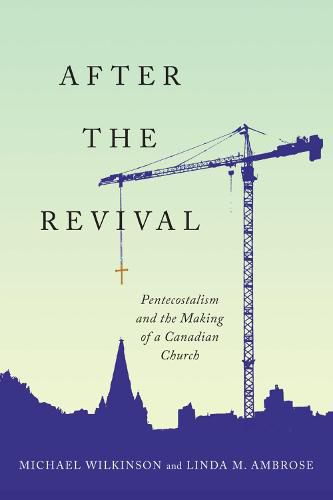Readings Newsletter
Become a Readings Member to make your shopping experience even easier.
Sign in or sign up for free!
You’re not far away from qualifying for FREE standard shipping within Australia
You’ve qualified for FREE standard shipping within Australia
The cart is loading…






This title is printed to order. This book may have been self-published. If so, we cannot guarantee the quality of the content. In the main most books will have gone through the editing process however some may not. We therefore suggest that you be aware of this before ordering this book. If in doubt check either the author or publisher’s details as we are unable to accept any returns unless they are faulty. Please contact us if you have any questions.
Early Pentecostal revivals swept through Canadian communities, big and small, in the early 1900s. Reports abounded of worshippers falling down at the altar, speaking in tongues, having dreams and visions, and experiencing divine healing. Tent meetings inspired curious onlookers to witness these phenomena for themselves. Following these revival meetings, Pentecostals organized, built churches, and expanded across the country, while many churches were beginning to decline. How did these Pentecostal holy rollers move from the fringe to take centre stage in Canada’s religious landscape? Why is a religious group rooted in the early twentieth century, tied to Methodism and the Holiness movement, still so popular among followers from all walks of life, especially Indigenous peoples and new Canadians? In After the Revival Michael Wilkinson and Linda Ambrose ask these and other questions, arguing that the answers are tied to Pentecostalism’s continued organizational efforts. Since 1919, the Pentecostal Assemblies of Canada (PAOC) has worked to establish order and steady growth by managing financial and material assets, offering programs designed to attract families and youth, and training leaders. While Pentecostalism sometimes reflects broader cultural trends and at other times resists them, the PAOC has grown steadily to become one of the largest evangelical denominations in Canada. Addressing broader questions about how religious movements organize, establish an identity, and develop a subculture that flourishes, After the Revival explores the fascinating history of Pentecostalism in Canada and the ways the church, represented by the PAOC, engages with Canadian society.
$9.00 standard shipping within Australia
FREE standard shipping within Australia for orders over $100.00
Express & International shipping calculated at checkout
This title is printed to order. This book may have been self-published. If so, we cannot guarantee the quality of the content. In the main most books will have gone through the editing process however some may not. We therefore suggest that you be aware of this before ordering this book. If in doubt check either the author or publisher’s details as we are unable to accept any returns unless they are faulty. Please contact us if you have any questions.
Early Pentecostal revivals swept through Canadian communities, big and small, in the early 1900s. Reports abounded of worshippers falling down at the altar, speaking in tongues, having dreams and visions, and experiencing divine healing. Tent meetings inspired curious onlookers to witness these phenomena for themselves. Following these revival meetings, Pentecostals organized, built churches, and expanded across the country, while many churches were beginning to decline. How did these Pentecostal holy rollers move from the fringe to take centre stage in Canada’s religious landscape? Why is a religious group rooted in the early twentieth century, tied to Methodism and the Holiness movement, still so popular among followers from all walks of life, especially Indigenous peoples and new Canadians? In After the Revival Michael Wilkinson and Linda Ambrose ask these and other questions, arguing that the answers are tied to Pentecostalism’s continued organizational efforts. Since 1919, the Pentecostal Assemblies of Canada (PAOC) has worked to establish order and steady growth by managing financial and material assets, offering programs designed to attract families and youth, and training leaders. While Pentecostalism sometimes reflects broader cultural trends and at other times resists them, the PAOC has grown steadily to become one of the largest evangelical denominations in Canada. Addressing broader questions about how religious movements organize, establish an identity, and develop a subculture that flourishes, After the Revival explores the fascinating history of Pentecostalism in Canada and the ways the church, represented by the PAOC, engages with Canadian society.